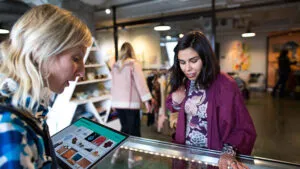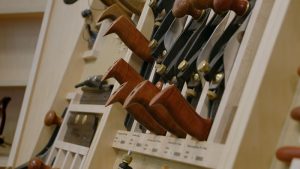
New use cases for device and mobile retail: Preparing for the next wave


Is the mobility and device revolution motivating or debilitating retailers in their quest to win consumer mindshare and walletshare? 2014 EKN analysis (n=131 retailers) reveals that on an average less than a third of retailers use some form of mobility and inter-operable devices that support sales, service and operations today. The goal for adoption varies somewhere between “wide implementation” and “limited implementation” levels. The business areas where mobility is being used in limited rollouts include store, corporate headquarters, Omni-channel/e-Commerce, supply chain, merchandising, among others. There is a certain hesitation among the broader industry to fully embrace mobile despite the fact that in private they want a piece of the pie and their key consumer groups are clearly asking for more.
For instance, EKN’s analysis (n=1700 millennial consumers) shows that millennials (the 18-30 age group consumer segment) are highly mobile/device savvy and possesses high shopping spend affinity. More than one-third of them shop on mobile devices at least once a month or more and 1 in 2 use mobile for shopping outside the store (includes occasionally, frequently and everytime). 36% of millennials actually leverage mobile while shopping in store. In terms of adoption, mobility and device-centric retailing across specific in-store or other enterprise-level use cases is trending so far in high-single digits or at best low double-digits. This trend begs several questions:
- How will retailers take mobility and device-centric retailing deeper into the enterprise?”
- Will we see mobile and device acceleration any time soon in an otherwise relatively morbid retail IT environment?”
- Are retailers looking more use-case justification, more associate training or enhanced consumer awareness around their mobile applications?”
The answer may lie in creating device and mobility strategies and supporting retail business models that are fundamentally not as self-depreciating as is the case today; i.e. the high burn and obsolescence rates related to devices, operating systems, graphic user interface, features/functions, inter-operability, payment acceptance, data management, among other areas.
Undoubtedly, there exists a hype-cycle related to the consumer device explosion and mobility adoption in retail stores as well as within the retail enterprise as a whole including the supply chain. However, recent EKN data demonstrates that while retailer and consumer-owned devices such as smart phones, tablets and mobile POS handhelds have acquired a definite strategic play among retailers of all shapes and sizes, execution of programs that enable more seamless adoption by consumers and retail employees alike requires far greater strategic planning by retailers and solution providers.
This situation is compounded by the fact that on the horizon there exists commercialized internet of things (IoT)-capable devices, wearable devices (e.g. activity trackers, smart watches, smart glasses and other devices), and beacons. Yet again, per EKN data, consumer cohorts such as millennials demonstrate a high interest quotient for wearable devices such as activity trackers (60%), smart watches (29%), and smart glasses (13%). The inter-operability power of wearable devices with other in-store and out-of-store systems in the realm of IoT can be compelling in terms of opt-in targeted location-based messaging, promotions and brand advocacy.
In terms of IoT-capable devices, wearable devices and beacons, there is a sizeable opportunity to develop retailer prototype examples and blueprints that enable location-based services infrastructure requirements and data security associated with consumer-owned and retailer-owned devices. This includes inter-operable device data flow, encryption and secure access associated with multiple sensor-based and mobile/tablet touch points that use Wi-Fi, WLAN, Infrared, GPS Bluetooth or a combination of these location messaging technologies.
Another IoT advantage that retailers can leverage is the intelligence and data that can be extracted from IoT-capable devices. Depending on the type of IoT-capable device and how it is placed in the store, the potential use cases for IoT data insights include in-store consumer buying behavior mapping, product movement, out-of-stocks, guided selling, sales activity tracking, among others. The challenge is to figure out IoT data that is most relevant for retailers as not every type of data capture will provide useful information.
However, despite all these advantages, yet again most if not all retailers will be left wanting in preparing their stores, channels, product catalogs, marketing programs, and promotions to respond to IoT, wearable devices and beacons appropriately. Despite all the questions and some possible answers I have offered in this blog, I am an internal optimist and confessed my unwavering love for retail years ago. Retail shall prevail but will need a helping hand from the ecosystem that claims to be ahead of the curve i.e. Best-in-Class solution providers. So let me turn this around…are solution providers listening?
You can contact me via email or follow me on Twitter: sanand@edgellmail.com; @sahiranand to discuss these topics and other retail value chain areas including thoughts on which solution providers are ahead of the curve on similar retail issues.




